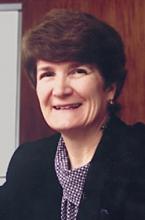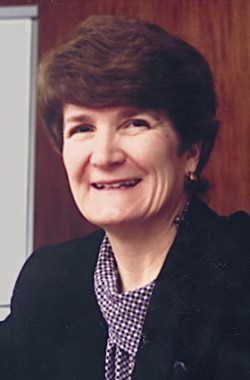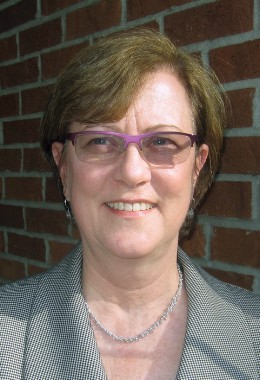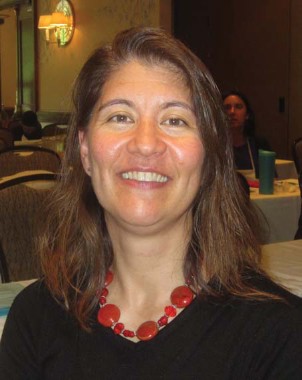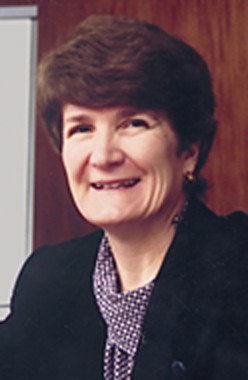User login
North Pacific Pediatric Society (NPPS): Scientific Conference
If babies don't sleep at night, check feeding schedule
PORTLAND, ORE. – Sometimes, parents who get great advice in the hospital about how often to feed their newborns are in the pediatrician’s office a few months later because their baby isn’t sleeping more than a couple hours at a time, and they don’t know what to do about it.
They might have a "trained night-feeder" on their hands, according to Dr. Barbara Howard of the department of pediatrics at Johns Hopkins University in Baltimore.
In the nursery, parents are often told to feed on demand, but "we don’t remember to tell them to change that" after the first several weeks of life, so the child keeps to the schedule. At 4 months, he might still be waking up every 90 minutes to be fed, she said.
It’s not necessary. Half of kids at a month and a half and 95% by 4 months of gestational term age, can go 8 hours without feeding, Dr. Howard said at a conference sponsored by the North Pacific Pediatric Society.
The trick to breaking the pattern is to lengthen the daytime feeding interval. "Make [the baby] wait just a little bit longer when he starts fussing, until you’re aiming for about 4 hours between feedings. Make sure he is getting a feeding before the parents go to bed," as well. Don’t go cold turkey, either, if the child is used to an 8-ounce feeding at 2 a.m.; it’s kinder to slowly decrease the amount over a week or so, Dr. Howard said.
The fix is a bit more complex if the child is used to falling asleep with the bottle or breast in her mouth; she might need those familiar comforts to fall asleep after awakening for her 2 a.m. feeding.
To prevent the association – or hopefully break it if it’s already established – "advise parents to put the baby in bed at least a little bit awake, starting at about 2 months of age. Let her fuss just a little bit, make sure she opens her eyes," she said.
"Does that mean [mothers] can’t breastfeed the baby until she is asleep? Well, it’s okay to do that, but they need to wake her back up to put her in bed," she said.
A lot of mothers and fathers might also want to share their bed with their child for the first few months, which also isn’t necessarily a bad thing.
In many places, "it’s become our policy [that] we say ‘No, you shouldn’t sleep with your baby,’ [but] really, it’s often about parents" wanting to give their child a "cozy first few months of life, and I don’t think that’s a terrible thing," Dr. Howard said.
Plus, parents are going to do it anyway, "so I think it’s better to be on the up and up with [them] and say ‘here are some things you need to be careful about,’ " she said.
Entrapment in soft bedding is a real danger, as is "a parent who sleeps too deeply. Usually they are obese, or using substances or alcohol, and they overlie their child," she said.
Eight months is about the limit for cosleeping. Developmental night waking starts about then and will make breaking the habit "more of a struggle," she said.
Dr. Howard is the creator of CHADIS and president of Total Child Health, the management company that licenses its use.
PORTLAND, ORE. – Sometimes, parents who get great advice in the hospital about how often to feed their newborns are in the pediatrician’s office a few months later because their baby isn’t sleeping more than a couple hours at a time, and they don’t know what to do about it.
They might have a "trained night-feeder" on their hands, according to Dr. Barbara Howard of the department of pediatrics at Johns Hopkins University in Baltimore.
In the nursery, parents are often told to feed on demand, but "we don’t remember to tell them to change that" after the first several weeks of life, so the child keeps to the schedule. At 4 months, he might still be waking up every 90 minutes to be fed, she said.
It’s not necessary. Half of kids at a month and a half and 95% by 4 months of gestational term age, can go 8 hours without feeding, Dr. Howard said at a conference sponsored by the North Pacific Pediatric Society.
The trick to breaking the pattern is to lengthen the daytime feeding interval. "Make [the baby] wait just a little bit longer when he starts fussing, until you’re aiming for about 4 hours between feedings. Make sure he is getting a feeding before the parents go to bed," as well. Don’t go cold turkey, either, if the child is used to an 8-ounce feeding at 2 a.m.; it’s kinder to slowly decrease the amount over a week or so, Dr. Howard said.
The fix is a bit more complex if the child is used to falling asleep with the bottle or breast in her mouth; she might need those familiar comforts to fall asleep after awakening for her 2 a.m. feeding.
To prevent the association – or hopefully break it if it’s already established – "advise parents to put the baby in bed at least a little bit awake, starting at about 2 months of age. Let her fuss just a little bit, make sure she opens her eyes," she said.
"Does that mean [mothers] can’t breastfeed the baby until she is asleep? Well, it’s okay to do that, but they need to wake her back up to put her in bed," she said.
A lot of mothers and fathers might also want to share their bed with their child for the first few months, which also isn’t necessarily a bad thing.
In many places, "it’s become our policy [that] we say ‘No, you shouldn’t sleep with your baby,’ [but] really, it’s often about parents" wanting to give their child a "cozy first few months of life, and I don’t think that’s a terrible thing," Dr. Howard said.
Plus, parents are going to do it anyway, "so I think it’s better to be on the up and up with [them] and say ‘here are some things you need to be careful about,’ " she said.
Entrapment in soft bedding is a real danger, as is "a parent who sleeps too deeply. Usually they are obese, or using substances or alcohol, and they overlie their child," she said.
Eight months is about the limit for cosleeping. Developmental night waking starts about then and will make breaking the habit "more of a struggle," she said.
Dr. Howard is the creator of CHADIS and president of Total Child Health, the management company that licenses its use.
PORTLAND, ORE. – Sometimes, parents who get great advice in the hospital about how often to feed their newborns are in the pediatrician’s office a few months later because their baby isn’t sleeping more than a couple hours at a time, and they don’t know what to do about it.
They might have a "trained night-feeder" on their hands, according to Dr. Barbara Howard of the department of pediatrics at Johns Hopkins University in Baltimore.
In the nursery, parents are often told to feed on demand, but "we don’t remember to tell them to change that" after the first several weeks of life, so the child keeps to the schedule. At 4 months, he might still be waking up every 90 minutes to be fed, she said.
It’s not necessary. Half of kids at a month and a half and 95% by 4 months of gestational term age, can go 8 hours without feeding, Dr. Howard said at a conference sponsored by the North Pacific Pediatric Society.
The trick to breaking the pattern is to lengthen the daytime feeding interval. "Make [the baby] wait just a little bit longer when he starts fussing, until you’re aiming for about 4 hours between feedings. Make sure he is getting a feeding before the parents go to bed," as well. Don’t go cold turkey, either, if the child is used to an 8-ounce feeding at 2 a.m.; it’s kinder to slowly decrease the amount over a week or so, Dr. Howard said.
The fix is a bit more complex if the child is used to falling asleep with the bottle or breast in her mouth; she might need those familiar comforts to fall asleep after awakening for her 2 a.m. feeding.
To prevent the association – or hopefully break it if it’s already established – "advise parents to put the baby in bed at least a little bit awake, starting at about 2 months of age. Let her fuss just a little bit, make sure she opens her eyes," she said.
"Does that mean [mothers] can’t breastfeed the baby until she is asleep? Well, it’s okay to do that, but they need to wake her back up to put her in bed," she said.
A lot of mothers and fathers might also want to share their bed with their child for the first few months, which also isn’t necessarily a bad thing.
In many places, "it’s become our policy [that] we say ‘No, you shouldn’t sleep with your baby,’ [but] really, it’s often about parents" wanting to give their child a "cozy first few months of life, and I don’t think that’s a terrible thing," Dr. Howard said.
Plus, parents are going to do it anyway, "so I think it’s better to be on the up and up with [them] and say ‘here are some things you need to be careful about,’ " she said.
Entrapment in soft bedding is a real danger, as is "a parent who sleeps too deeply. Usually they are obese, or using substances or alcohol, and they overlie their child," she said.
Eight months is about the limit for cosleeping. Developmental night waking starts about then and will make breaking the habit "more of a struggle," she said.
Dr. Howard is the creator of CHADIS and president of Total Child Health, the management company that licenses its use.
EXPERT ANALYSIS FROM NPPS SCIENTIFIC CONFERENCE
Gut flora emerging as key pediatric health component
PORTLAND, ORE. – Fecal transplants are proving useful for pediatric ulcerative colitis, and enteral feedings are already well established in Europe to help kids with Crohn’s disease; together, the findings suggest that gut flora is more important to pediatric gastrointestinal health than previously thought, according to Dr. Linda Muir.
In both cases, "they think a lot of [the effect] has to do with modification of bowel flora. I think we are all starting to realize that the bacteria we carry around in our bodies drive and determine a lot of our health and illness. A lot of autoimmune disorders may be related to [imbalances in our] gut microbiome," said Dr. Muir, chief of pediatric gastroenterology at the Oregon Health and Science University in Portland.
Although it’s unclear at the moment if donor stool is best delivered by nasogastric tube, colonoscope, or enema, it’s easy to understand how fecal transplants might correct such an imbalance. They’ve proven remarkably effective for Clostridium difficile infections, and now "good studies are being published for [their] application in [inflammatory bowel disease]. They’re very promising" for pediatric ulcerative colitis (UC), she said at a conference sponsored by the North Pacific Pediatric Society.
In one study from Michigan State and Emory universities, 10 children (aged 7-21 years) with mild to moderate UC received fecal enemas, 165 mL on average, for 5 days. Seven of nine (78%) – the 10th couldn’t retain the enema – showed a significant clinical response within a week, including three remissions. Six (67%) maintained their response at 1 month. There were no serious adverse events (J. Pediatr. Gastroenterol. Nutr. 2013;56:597-601).
If other studies have results like that, "I think [fecal transplants] may become more common in our practice. [Perhaps] we can turn around kids who are not responding to medication," Dr. Muir said.
It’s less clear how enteral feedings might rebalance the gut flora in Crohn’s kids. Typically, a child gets 100% of his or her nutrition for a period of time from milk-based products such as Ensure, Boost, or Nutren delivered by nasogastric tube at home; older children often learn to place the tube themselves. Dr. Muir favors products that pack the most calories in the least volume so kids don’t have to get up in the middle of the night to urinate; she uses enteral therapy as a supplement to the more usual Crohn’s approaches.
"Why does this make them better? We don’t know. Is it because of the nutrients? Are you removing food protein antigens? It may tie together with what we are seeing with fecal transplant, somehow modifying the fecal flora to allow mucosal healing. [Kids] obviously have much improved growth and they actually get true mucosal healing" on enteral feeding, unlike with steroids, Dr. Muir said.
Whatever the reason, pediatric gastroenterologists in Europe have been using the technique for years and touting its benefits. "They don’t use nearly the steroids U.S. physicians use," she said. In 2012, the North American Society for Pediatric Gastroenterology, Hepatology, and Nutrition noted that enteral feeding offers "an alternative to corticosteroids to induce remission in pediatric CD [Crohn’s disease] and should be supported as a first-line induction therapy in pediatric CD" (J. Pediatr. Gastroenterol. Nutr. 2012;54:298-305). And it just might be the case that CD kids don’t need to get all their calories through a tube. Researchers at the Children’s Hospital of Philadelphia recently reviewed the charts of 23 kids who got 80%-90% of their calories by enteral feedings and found that 20 (87%) had a clinical response, and 15 (65%) went into remission after a mean of 2 months (Inflamm. Bowel Dis. 2013;19:1374-8).
Even though they were on the tube at home, they could pull it out in the morning and have lunch with their friends at school just like any other kid, Dr. Muir said.
She said she had no relevant financial disclosures.
PORTLAND, ORE. – Fecal transplants are proving useful for pediatric ulcerative colitis, and enteral feedings are already well established in Europe to help kids with Crohn’s disease; together, the findings suggest that gut flora is more important to pediatric gastrointestinal health than previously thought, according to Dr. Linda Muir.
In both cases, "they think a lot of [the effect] has to do with modification of bowel flora. I think we are all starting to realize that the bacteria we carry around in our bodies drive and determine a lot of our health and illness. A lot of autoimmune disorders may be related to [imbalances in our] gut microbiome," said Dr. Muir, chief of pediatric gastroenterology at the Oregon Health and Science University in Portland.
Although it’s unclear at the moment if donor stool is best delivered by nasogastric tube, colonoscope, or enema, it’s easy to understand how fecal transplants might correct such an imbalance. They’ve proven remarkably effective for Clostridium difficile infections, and now "good studies are being published for [their] application in [inflammatory bowel disease]. They’re very promising" for pediatric ulcerative colitis (UC), she said at a conference sponsored by the North Pacific Pediatric Society.
In one study from Michigan State and Emory universities, 10 children (aged 7-21 years) with mild to moderate UC received fecal enemas, 165 mL on average, for 5 days. Seven of nine (78%) – the 10th couldn’t retain the enema – showed a significant clinical response within a week, including three remissions. Six (67%) maintained their response at 1 month. There were no serious adverse events (J. Pediatr. Gastroenterol. Nutr. 2013;56:597-601).
If other studies have results like that, "I think [fecal transplants] may become more common in our practice. [Perhaps] we can turn around kids who are not responding to medication," Dr. Muir said.
It’s less clear how enteral feedings might rebalance the gut flora in Crohn’s kids. Typically, a child gets 100% of his or her nutrition for a period of time from milk-based products such as Ensure, Boost, or Nutren delivered by nasogastric tube at home; older children often learn to place the tube themselves. Dr. Muir favors products that pack the most calories in the least volume so kids don’t have to get up in the middle of the night to urinate; she uses enteral therapy as a supplement to the more usual Crohn’s approaches.
"Why does this make them better? We don’t know. Is it because of the nutrients? Are you removing food protein antigens? It may tie together with what we are seeing with fecal transplant, somehow modifying the fecal flora to allow mucosal healing. [Kids] obviously have much improved growth and they actually get true mucosal healing" on enteral feeding, unlike with steroids, Dr. Muir said.
Whatever the reason, pediatric gastroenterologists in Europe have been using the technique for years and touting its benefits. "They don’t use nearly the steroids U.S. physicians use," she said. In 2012, the North American Society for Pediatric Gastroenterology, Hepatology, and Nutrition noted that enteral feeding offers "an alternative to corticosteroids to induce remission in pediatric CD [Crohn’s disease] and should be supported as a first-line induction therapy in pediatric CD" (J. Pediatr. Gastroenterol. Nutr. 2012;54:298-305). And it just might be the case that CD kids don’t need to get all their calories through a tube. Researchers at the Children’s Hospital of Philadelphia recently reviewed the charts of 23 kids who got 80%-90% of their calories by enteral feedings and found that 20 (87%) had a clinical response, and 15 (65%) went into remission after a mean of 2 months (Inflamm. Bowel Dis. 2013;19:1374-8).
Even though they were on the tube at home, they could pull it out in the morning and have lunch with their friends at school just like any other kid, Dr. Muir said.
She said she had no relevant financial disclosures.
PORTLAND, ORE. – Fecal transplants are proving useful for pediatric ulcerative colitis, and enteral feedings are already well established in Europe to help kids with Crohn’s disease; together, the findings suggest that gut flora is more important to pediatric gastrointestinal health than previously thought, according to Dr. Linda Muir.
In both cases, "they think a lot of [the effect] has to do with modification of bowel flora. I think we are all starting to realize that the bacteria we carry around in our bodies drive and determine a lot of our health and illness. A lot of autoimmune disorders may be related to [imbalances in our] gut microbiome," said Dr. Muir, chief of pediatric gastroenterology at the Oregon Health and Science University in Portland.
Although it’s unclear at the moment if donor stool is best delivered by nasogastric tube, colonoscope, or enema, it’s easy to understand how fecal transplants might correct such an imbalance. They’ve proven remarkably effective for Clostridium difficile infections, and now "good studies are being published for [their] application in [inflammatory bowel disease]. They’re very promising" for pediatric ulcerative colitis (UC), she said at a conference sponsored by the North Pacific Pediatric Society.
In one study from Michigan State and Emory universities, 10 children (aged 7-21 years) with mild to moderate UC received fecal enemas, 165 mL on average, for 5 days. Seven of nine (78%) – the 10th couldn’t retain the enema – showed a significant clinical response within a week, including three remissions. Six (67%) maintained their response at 1 month. There were no serious adverse events (J. Pediatr. Gastroenterol. Nutr. 2013;56:597-601).
If other studies have results like that, "I think [fecal transplants] may become more common in our practice. [Perhaps] we can turn around kids who are not responding to medication," Dr. Muir said.
It’s less clear how enteral feedings might rebalance the gut flora in Crohn’s kids. Typically, a child gets 100% of his or her nutrition for a period of time from milk-based products such as Ensure, Boost, or Nutren delivered by nasogastric tube at home; older children often learn to place the tube themselves. Dr. Muir favors products that pack the most calories in the least volume so kids don’t have to get up in the middle of the night to urinate; she uses enteral therapy as a supplement to the more usual Crohn’s approaches.
"Why does this make them better? We don’t know. Is it because of the nutrients? Are you removing food protein antigens? It may tie together with what we are seeing with fecal transplant, somehow modifying the fecal flora to allow mucosal healing. [Kids] obviously have much improved growth and they actually get true mucosal healing" on enteral feeding, unlike with steroids, Dr. Muir said.
Whatever the reason, pediatric gastroenterologists in Europe have been using the technique for years and touting its benefits. "They don’t use nearly the steroids U.S. physicians use," she said. In 2012, the North American Society for Pediatric Gastroenterology, Hepatology, and Nutrition noted that enteral feeding offers "an alternative to corticosteroids to induce remission in pediatric CD [Crohn’s disease] and should be supported as a first-line induction therapy in pediatric CD" (J. Pediatr. Gastroenterol. Nutr. 2012;54:298-305). And it just might be the case that CD kids don’t need to get all their calories through a tube. Researchers at the Children’s Hospital of Philadelphia recently reviewed the charts of 23 kids who got 80%-90% of their calories by enteral feedings and found that 20 (87%) had a clinical response, and 15 (65%) went into remission after a mean of 2 months (Inflamm. Bowel Dis. 2013;19:1374-8).
Even though they were on the tube at home, they could pull it out in the morning and have lunch with their friends at school just like any other kid, Dr. Muir said.
She said she had no relevant financial disclosures.
EXPERT ANALYSIS FROM THE NPPS SCIENTIFIC CONFERENCE
Joint pain in children rules out JIA
PORTLAND, ORE. – Joint pain isn’t usually part of the clinical picture when children have juvenile idiopathic arthritis, according to pediatric rheumatologist Victoria Cartwright.
"In fact, it helps you discount that juvenile arthritis is going on," she said at a conference sponsored by the North Pacific Pediatric Society.
Pain as an isolated complaint has a negative predictive value for pediatric rheumatic disease of 0.99 and, as one of several reasons for a rheumatology referral, a negative predictive value of 0.91 (Pediatrics 2002;110:354-9).
"That’s better than any lab test or x-ray [and] about as good as MRI. [So] if you’re calling me saying that Johnny has knee pain, I’m not as worried about JIA [juvenile idiopathic arthritis]. I may be worried about [Henoch-Schönlein purpura (HSP)] or a mechanical issue or something else ... but [not] JIA," said Dr. Cartwright of Randall Children’s Hospital at Legacy Emanuel in Portland, Ore.
On the other hand, "labs really don’t help one way or the other to make the diagnosis of arthritis. Rheumatoid factor doesn’t help. [Erythrocyte sedimentation rate] is helpful if it’s abnormal, but only kind of. I can have a kid who has 20 inflamed joints and their sed rate is 2; I can have another kid with one swollen knee, and their sed rate is 30. [However,] if the sed rate is over 100, I worry about other stuff," such as systemic disease, lupus, HSP, vasculitis, or malignancy, she said.
If those problems have been ruled out, Dr. Cartwright said she usually waits until kids have been on NSAIDs – she favors weight-dosed ibuprofen or naproxen – for a month before getting a complete blood count, a liver enzyme panel, and an antinuclear antibody (ANA) test. "I’m not a big fan of labs up front" for JIA "because we end up chasing the lab illness a little bit," she said. JIA kids also need a referral to an ophthalmologist to check for iritis. If this condition is present, ANA testing helps tell how aggressive it is.
As for assessment, Dr. Cartwright noted that obesity makes it tough to check the ankle for swelling; extra pounds obscure the Achilles tendon and the divots to either side. "It’s one of the joints I image a lot with MRI because I [often] can’t see it very well," she said.
Swelling can be hard to detect in kids with polyarticular disease because it can be more or less even on either side of the body, and, thus, less noticeable. One trick, especially helpful with the hands, is to compare the skin folds and wrinkles around corresponding joints. If they aren’t symmetrical, it could be due to swelling.
Check for jaw arthritis, too, Dr. Cartwright said. A lot of children don’t even know there’s a problem because it’s painless, but left unchecked, jaw arthritis can cause growth abnormalities – associated asymmetries are most obvious when the head’s tilted back – and make it difficult to fully open the mouth.
Patients should be able to insert their three middle fingers vertically into their mouth. When they can’t, "we do some dynamic stretching. We’ll stack tongue blades" to reach the appropriate thickness and have patients place them in their mouth to "stretch the muscles out, kind of like doing [physical therapy]," Dr. Cartwright said.
She said she has no relevant financial disclosures.
PORTLAND, ORE. – Joint pain isn’t usually part of the clinical picture when children have juvenile idiopathic arthritis, according to pediatric rheumatologist Victoria Cartwright.
"In fact, it helps you discount that juvenile arthritis is going on," she said at a conference sponsored by the North Pacific Pediatric Society.
Pain as an isolated complaint has a negative predictive value for pediatric rheumatic disease of 0.99 and, as one of several reasons for a rheumatology referral, a negative predictive value of 0.91 (Pediatrics 2002;110:354-9).
"That’s better than any lab test or x-ray [and] about as good as MRI. [So] if you’re calling me saying that Johnny has knee pain, I’m not as worried about JIA [juvenile idiopathic arthritis]. I may be worried about [Henoch-Schönlein purpura (HSP)] or a mechanical issue or something else ... but [not] JIA," said Dr. Cartwright of Randall Children’s Hospital at Legacy Emanuel in Portland, Ore.
On the other hand, "labs really don’t help one way or the other to make the diagnosis of arthritis. Rheumatoid factor doesn’t help. [Erythrocyte sedimentation rate] is helpful if it’s abnormal, but only kind of. I can have a kid who has 20 inflamed joints and their sed rate is 2; I can have another kid with one swollen knee, and their sed rate is 30. [However,] if the sed rate is over 100, I worry about other stuff," such as systemic disease, lupus, HSP, vasculitis, or malignancy, she said.
If those problems have been ruled out, Dr. Cartwright said she usually waits until kids have been on NSAIDs – she favors weight-dosed ibuprofen or naproxen – for a month before getting a complete blood count, a liver enzyme panel, and an antinuclear antibody (ANA) test. "I’m not a big fan of labs up front" for JIA "because we end up chasing the lab illness a little bit," she said. JIA kids also need a referral to an ophthalmologist to check for iritis. If this condition is present, ANA testing helps tell how aggressive it is.
As for assessment, Dr. Cartwright noted that obesity makes it tough to check the ankle for swelling; extra pounds obscure the Achilles tendon and the divots to either side. "It’s one of the joints I image a lot with MRI because I [often] can’t see it very well," she said.
Swelling can be hard to detect in kids with polyarticular disease because it can be more or less even on either side of the body, and, thus, less noticeable. One trick, especially helpful with the hands, is to compare the skin folds and wrinkles around corresponding joints. If they aren’t symmetrical, it could be due to swelling.
Check for jaw arthritis, too, Dr. Cartwright said. A lot of children don’t even know there’s a problem because it’s painless, but left unchecked, jaw arthritis can cause growth abnormalities – associated asymmetries are most obvious when the head’s tilted back – and make it difficult to fully open the mouth.
Patients should be able to insert their three middle fingers vertically into their mouth. When they can’t, "we do some dynamic stretching. We’ll stack tongue blades" to reach the appropriate thickness and have patients place them in their mouth to "stretch the muscles out, kind of like doing [physical therapy]," Dr. Cartwright said.
She said she has no relevant financial disclosures.
PORTLAND, ORE. – Joint pain isn’t usually part of the clinical picture when children have juvenile idiopathic arthritis, according to pediatric rheumatologist Victoria Cartwright.
"In fact, it helps you discount that juvenile arthritis is going on," she said at a conference sponsored by the North Pacific Pediatric Society.
Pain as an isolated complaint has a negative predictive value for pediatric rheumatic disease of 0.99 and, as one of several reasons for a rheumatology referral, a negative predictive value of 0.91 (Pediatrics 2002;110:354-9).
"That’s better than any lab test or x-ray [and] about as good as MRI. [So] if you’re calling me saying that Johnny has knee pain, I’m not as worried about JIA [juvenile idiopathic arthritis]. I may be worried about [Henoch-Schönlein purpura (HSP)] or a mechanical issue or something else ... but [not] JIA," said Dr. Cartwright of Randall Children’s Hospital at Legacy Emanuel in Portland, Ore.
On the other hand, "labs really don’t help one way or the other to make the diagnosis of arthritis. Rheumatoid factor doesn’t help. [Erythrocyte sedimentation rate] is helpful if it’s abnormal, but only kind of. I can have a kid who has 20 inflamed joints and their sed rate is 2; I can have another kid with one swollen knee, and their sed rate is 30. [However,] if the sed rate is over 100, I worry about other stuff," such as systemic disease, lupus, HSP, vasculitis, or malignancy, she said.
If those problems have been ruled out, Dr. Cartwright said she usually waits until kids have been on NSAIDs – she favors weight-dosed ibuprofen or naproxen – for a month before getting a complete blood count, a liver enzyme panel, and an antinuclear antibody (ANA) test. "I’m not a big fan of labs up front" for JIA "because we end up chasing the lab illness a little bit," she said. JIA kids also need a referral to an ophthalmologist to check for iritis. If this condition is present, ANA testing helps tell how aggressive it is.
As for assessment, Dr. Cartwright noted that obesity makes it tough to check the ankle for swelling; extra pounds obscure the Achilles tendon and the divots to either side. "It’s one of the joints I image a lot with MRI because I [often] can’t see it very well," she said.
Swelling can be hard to detect in kids with polyarticular disease because it can be more or less even on either side of the body, and, thus, less noticeable. One trick, especially helpful with the hands, is to compare the skin folds and wrinkles around corresponding joints. If they aren’t symmetrical, it could be due to swelling.
Check for jaw arthritis, too, Dr. Cartwright said. A lot of children don’t even know there’s a problem because it’s painless, but left unchecked, jaw arthritis can cause growth abnormalities – associated asymmetries are most obvious when the head’s tilted back – and make it difficult to fully open the mouth.
Patients should be able to insert their three middle fingers vertically into their mouth. When they can’t, "we do some dynamic stretching. We’ll stack tongue blades" to reach the appropriate thickness and have patients place them in their mouth to "stretch the muscles out, kind of like doing [physical therapy]," Dr. Cartwright said.
She said she has no relevant financial disclosures.
EXPERT ANALYSIS FROM THE NPPS SCIENTIFIC CONFERENCE
Hold off on the debriefing following a time-out
PORTLAND, ORE. – When time-outs don’t work, it’s often because they aren’t being done right, according to Dr. Barbara J. Howard.
Time-outs are "the best evidence-based consequence to change unwanted behavior," effective from as early as 9 months old – when some children are already hitting – and most effective between ages 2-6 years, said Dr. Howard, an assistant professor of pediatrics at Johns Hopkins University in Baltimore.
But parents first need to be taught how to do time-outs right, and practice them; that’s best done before they’re ever needed.
They should know that time-outs should be reserved for just a few serious offenses, such as hitting, kicking, or swearing, and that they are not a substitute for good parenting. If "the kid’s in time-out more than once a day, they are probably not getting enough positive attention for positive behaviors," Dr. Howard said at a conference sponsored by the North Pacific Pediatric Society.
Time-outs for aggressive behavior shouldn’t come with a warning beforehand. Instead, the child should get a brief statement of the offense – for instance, " ‘No hitting, hitting hurts, you’re in time-out.’ Then put [the child] in an uninteresting, but not-scary place." There should be no interaction while the sentence is served. Restraints are an option if the child squirms out of the chair, as is restarting the clock if they act up, said the pediatric developmental and behavioral specialist.
The general rule is 1 minute for each year of age, but if a child with attention-deficit/hyperactivity disorder (ADHD) is unable to sit for a few minutes, even 15 seconds can work. "Have the parent sort of watch them out of the corner of their eye. As soon as the child gives in to the fact that they are sitting there" – lets out a sigh, for example – "that’s the time to [let] them out," she said.
There shouldn’t be a discussion or lecture about what they did wrong when the time’s up. "They are so delicate when they come out of being given a consequence that they fall apart very easily, so it’s better not to talk about it at that moment because they can’t [hear] the lesson." A discussion is just likely to rekindle the situation, Dr. Howard said.
Instead, "return to the scene of the crime and distract them onto some new activity that they can be praised for. Find something positive about their behavior to talk about, or at least give them neutral attention," she said.
And "don’t ask them to apologize. First of all, are they sorry? No. So, if you force them to apologize, you are telling them to lie. That’s not good. [However,] it is appropriate for the adult to apologize to the victim" by saying something like "Oh, I’m sorry you got hurt. That must hurt a lot." The offender just might incorporate the example into their own behavior, she said.
It’s time to revisit the offense later on, after the storm’s passed. The child can be asked what they could have done differently, and given some different options. Role-playing helps.
Parents also need to know that "it’s quite common" for children to go back and do the exact same thing that got them into trouble in the first place, "but that doesn’t mean that the time-out didn’t work; the same thing is true if they get [spanked]. So you can reassure parents they aren’t crazy if they see [that time-outs are] not immediately effective. Tell them to hang in there, and expect change over time," Dr. Howard said.
Dr. Howard is the creator of CHADIS and president of Total Child Health, the management company that licenses its use.
PORTLAND, ORE. – When time-outs don’t work, it’s often because they aren’t being done right, according to Dr. Barbara J. Howard.
Time-outs are "the best evidence-based consequence to change unwanted behavior," effective from as early as 9 months old – when some children are already hitting – and most effective between ages 2-6 years, said Dr. Howard, an assistant professor of pediatrics at Johns Hopkins University in Baltimore.
But parents first need to be taught how to do time-outs right, and practice them; that’s best done before they’re ever needed.
They should know that time-outs should be reserved for just a few serious offenses, such as hitting, kicking, or swearing, and that they are not a substitute for good parenting. If "the kid’s in time-out more than once a day, they are probably not getting enough positive attention for positive behaviors," Dr. Howard said at a conference sponsored by the North Pacific Pediatric Society.
Time-outs for aggressive behavior shouldn’t come with a warning beforehand. Instead, the child should get a brief statement of the offense – for instance, " ‘No hitting, hitting hurts, you’re in time-out.’ Then put [the child] in an uninteresting, but not-scary place." There should be no interaction while the sentence is served. Restraints are an option if the child squirms out of the chair, as is restarting the clock if they act up, said the pediatric developmental and behavioral specialist.
The general rule is 1 minute for each year of age, but if a child with attention-deficit/hyperactivity disorder (ADHD) is unable to sit for a few minutes, even 15 seconds can work. "Have the parent sort of watch them out of the corner of their eye. As soon as the child gives in to the fact that they are sitting there" – lets out a sigh, for example – "that’s the time to [let] them out," she said.
There shouldn’t be a discussion or lecture about what they did wrong when the time’s up. "They are so delicate when they come out of being given a consequence that they fall apart very easily, so it’s better not to talk about it at that moment because they can’t [hear] the lesson." A discussion is just likely to rekindle the situation, Dr. Howard said.
Instead, "return to the scene of the crime and distract them onto some new activity that they can be praised for. Find something positive about their behavior to talk about, or at least give them neutral attention," she said.
And "don’t ask them to apologize. First of all, are they sorry? No. So, if you force them to apologize, you are telling them to lie. That’s not good. [However,] it is appropriate for the adult to apologize to the victim" by saying something like "Oh, I’m sorry you got hurt. That must hurt a lot." The offender just might incorporate the example into their own behavior, she said.
It’s time to revisit the offense later on, after the storm’s passed. The child can be asked what they could have done differently, and given some different options. Role-playing helps.
Parents also need to know that "it’s quite common" for children to go back and do the exact same thing that got them into trouble in the first place, "but that doesn’t mean that the time-out didn’t work; the same thing is true if they get [spanked]. So you can reassure parents they aren’t crazy if they see [that time-outs are] not immediately effective. Tell them to hang in there, and expect change over time," Dr. Howard said.
Dr. Howard is the creator of CHADIS and president of Total Child Health, the management company that licenses its use.
PORTLAND, ORE. – When time-outs don’t work, it’s often because they aren’t being done right, according to Dr. Barbara J. Howard.
Time-outs are "the best evidence-based consequence to change unwanted behavior," effective from as early as 9 months old – when some children are already hitting – and most effective between ages 2-6 years, said Dr. Howard, an assistant professor of pediatrics at Johns Hopkins University in Baltimore.
But parents first need to be taught how to do time-outs right, and practice them; that’s best done before they’re ever needed.
They should know that time-outs should be reserved for just a few serious offenses, such as hitting, kicking, or swearing, and that they are not a substitute for good parenting. If "the kid’s in time-out more than once a day, they are probably not getting enough positive attention for positive behaviors," Dr. Howard said at a conference sponsored by the North Pacific Pediatric Society.
Time-outs for aggressive behavior shouldn’t come with a warning beforehand. Instead, the child should get a brief statement of the offense – for instance, " ‘No hitting, hitting hurts, you’re in time-out.’ Then put [the child] in an uninteresting, but not-scary place." There should be no interaction while the sentence is served. Restraints are an option if the child squirms out of the chair, as is restarting the clock if they act up, said the pediatric developmental and behavioral specialist.
The general rule is 1 minute for each year of age, but if a child with attention-deficit/hyperactivity disorder (ADHD) is unable to sit for a few minutes, even 15 seconds can work. "Have the parent sort of watch them out of the corner of their eye. As soon as the child gives in to the fact that they are sitting there" – lets out a sigh, for example – "that’s the time to [let] them out," she said.
There shouldn’t be a discussion or lecture about what they did wrong when the time’s up. "They are so delicate when they come out of being given a consequence that they fall apart very easily, so it’s better not to talk about it at that moment because they can’t [hear] the lesson." A discussion is just likely to rekindle the situation, Dr. Howard said.
Instead, "return to the scene of the crime and distract them onto some new activity that they can be praised for. Find something positive about their behavior to talk about, or at least give them neutral attention," she said.
And "don’t ask them to apologize. First of all, are they sorry? No. So, if you force them to apologize, you are telling them to lie. That’s not good. [However,] it is appropriate for the adult to apologize to the victim" by saying something like "Oh, I’m sorry you got hurt. That must hurt a lot." The offender just might incorporate the example into their own behavior, she said.
It’s time to revisit the offense later on, after the storm’s passed. The child can be asked what they could have done differently, and given some different options. Role-playing helps.
Parents also need to know that "it’s quite common" for children to go back and do the exact same thing that got them into trouble in the first place, "but that doesn’t mean that the time-out didn’t work; the same thing is true if they get [spanked]. So you can reassure parents they aren’t crazy if they see [that time-outs are] not immediately effective. Tell them to hang in there, and expect change over time," Dr. Howard said.
Dr. Howard is the creator of CHADIS and president of Total Child Health, the management company that licenses its use.
EXPERT ANALYSIS FROM THE NPPS SCIENTIFIC CONFERENCE
